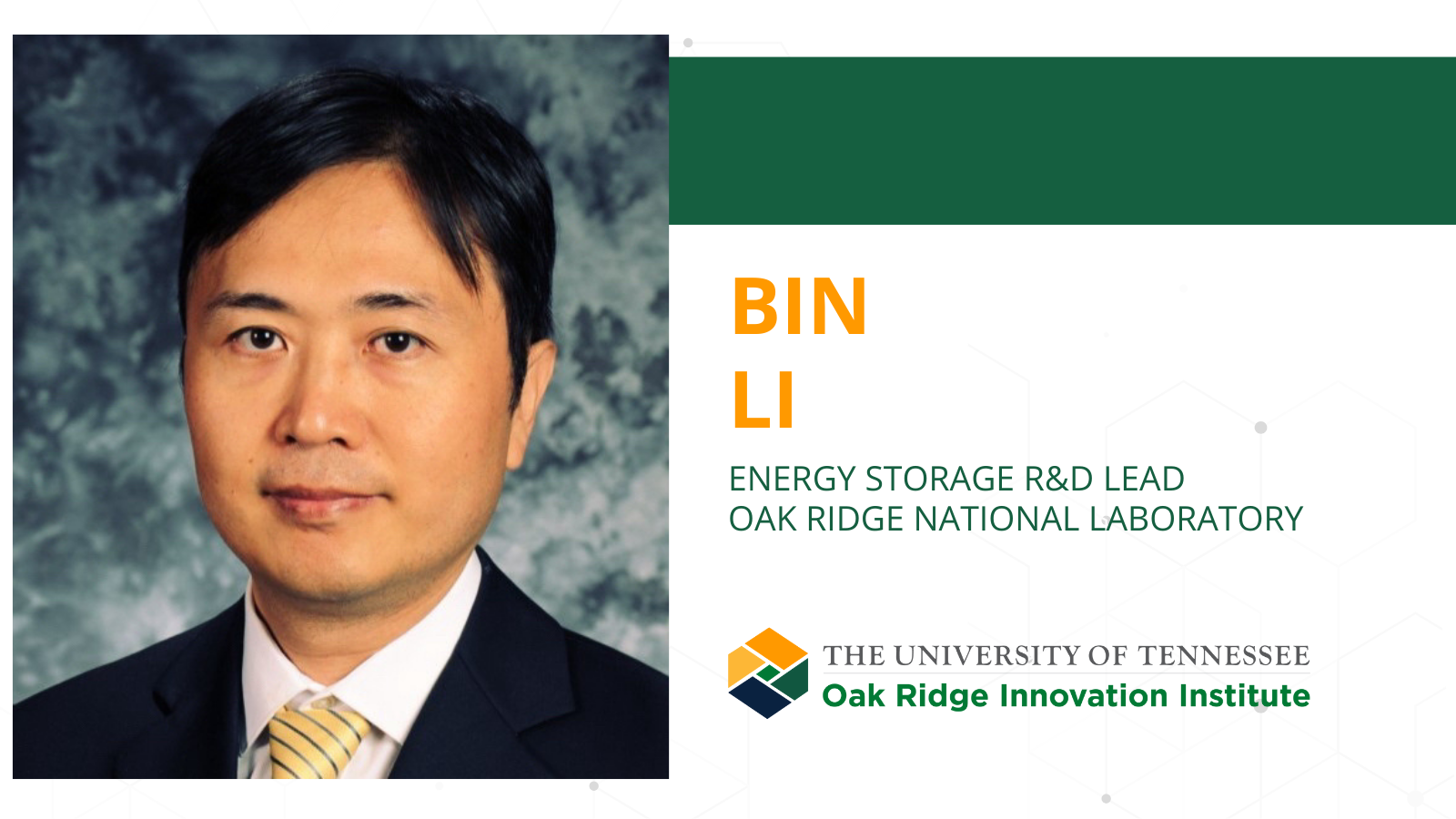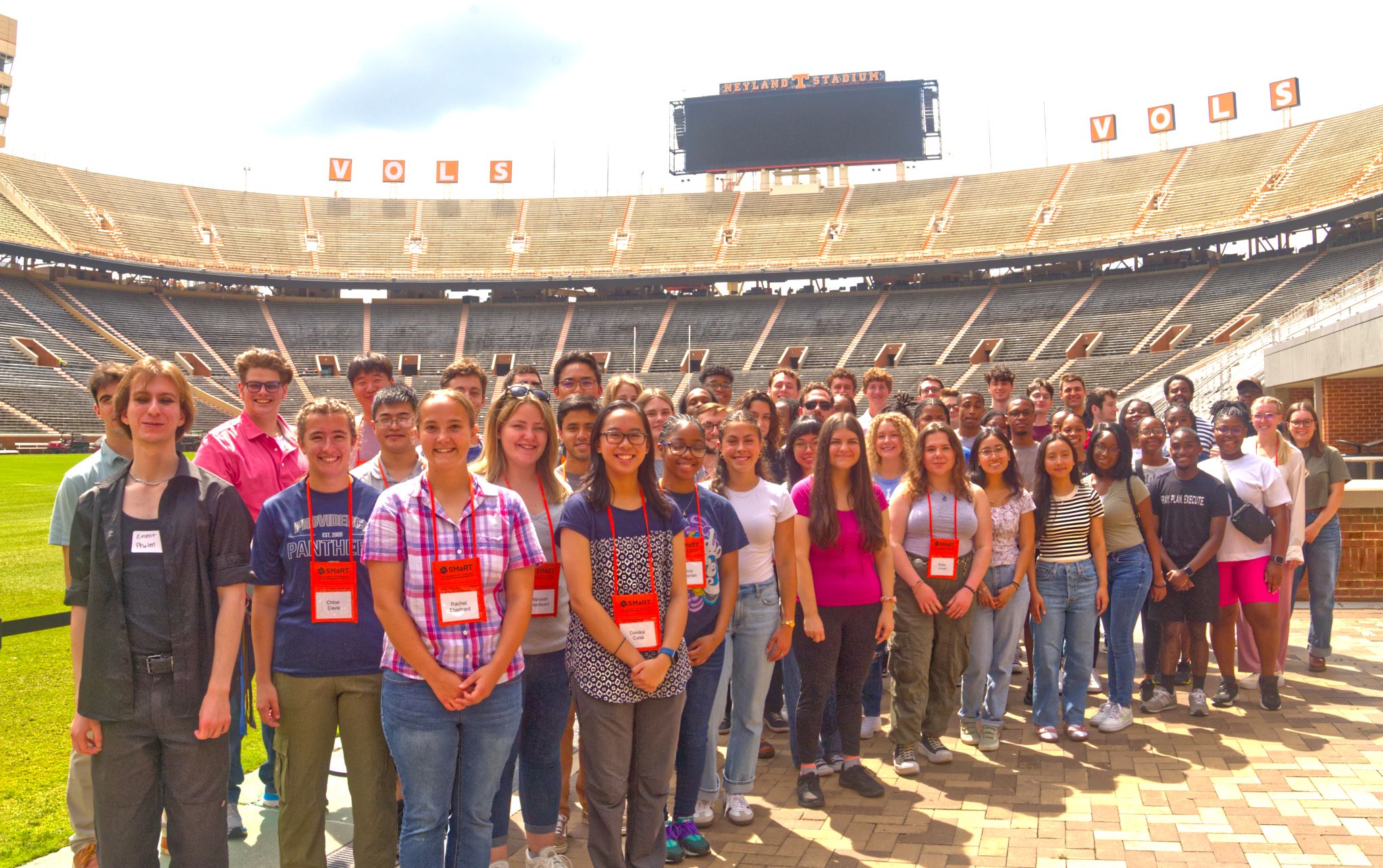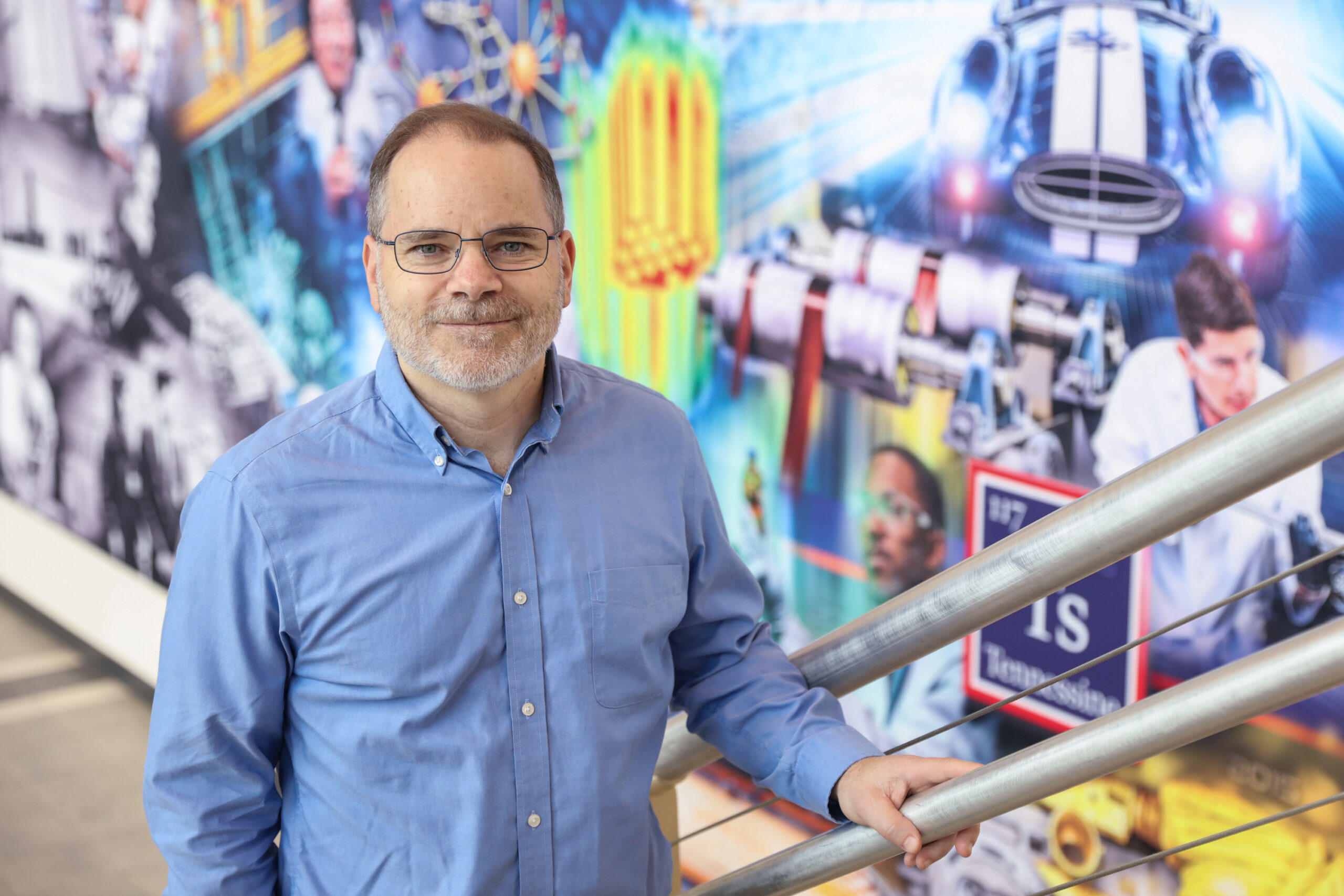Within the next decade, you may be able to drive your electric vehicle from Knoxville to Disney World—roughly 500 miles—without needing a charge. And you might be able to use your cell phone for a full week or more without plugging it in.
The key to improving the performance of such devices: lithium metal batteries, which can store more energy than today’s lithium-ion batteries.
Scientists are closer to understanding the complex chemical interactions in electrolytes that make lithium metal batteries work, thanks to work done by UT-Oak Ridge Innovation Institute and Oak Ridge National Laboratory researcher Bin Li and others whose study, “Localized High-Concentration Electrolytes Get More Localized Through Micelle-Like Structures,” was published in Natural Materials in November 2023.
Li explained that one obstacle in commercializing lithium metal batteries has been perfecting electrolytes, which allow an electrical charge to pass between a battery’s two terminals, sparking the electrochemical reaction needed to convert stored chemical energy to electric energy.
Traditional electrolytes used in lithium-ion batteries are made of low-concentration salt dissolved in a liquid solvent. However, these conventional low-concentration electrolytes (LCEs) are not effective in metal-based batteries.
Boosting the salt concentration forms high-concentration electrolytes (HCEs) but the increased salt concentration results in sluggish ion transport. To mitigate this pitfall, a low-viscosity diluent can be added to form localized high-concentration electrolytes (LHCEs), which makes the electrolyte flow better so that the power of the battery can be maintained.
But scientists haven’t known how and why LHCEs work, and those unknowns have been a hindrance in advancing the development of lithium metal batteries.
Li and his colleagues have helped shed light on this mystery with research inspired by the everyday use of soap, specifically what happens at the molecular level when you lather up to rid your hands of grime and dirt.
When you wash with soap, the soap disrupts the chemical bonds that allow dirt and other impurities to stick to your skin and then traps them in tiny “bubbles,” structures called micelles, so they can be washed away.
“Our paper provides a unified theory as to why this electrolyte works better and the key understanding of it came by finding that micelle-like structures form within this electrolyte—like they do with soap,” Li said.
In LHCEs, “we see that the role of the soap or surfactant is played by the solvent that binds both the diluent and the salt, wrapping itself around the higher concentration salt in the center of the micelle,” Li said.
This reduces the interfacial energy and stabilizes the dispersed liquid microstructure.
The findings will help researchers determine the ratios and concentrations that provide the optimum balance for salt, solvent, and diluent as they engineer LHCEs that will function most effectively in lithium metal batteries.
“From here, the impacts of electrolyte component choices in LHCEs to control the salt–solvent cluster size, shape and composition, as well as external parameters chosen during operation (for example, temperature), can be optimized to extend the anode stability and cyclability of high-energy batteries,” Li and his colleagues explain in the study.
Li recently joined Oak Ridge National Laboratory’s Energy Science and Technology directorate and is part of the UT-Oak Ridge Innovation Institute’s UT-ORNL research team working on the Energy Storage & Transportation convergent research initiative. UT-ORII’s convergent research initiatives are areas that UT and ORNL are jointly focusing research, education and workforce development efforts. Before joining UT-ORII and ORNL, Li was a senior scientist at Idaho National Laboratory for 4.5 years and a research associate and staff scientist at Pacific Northwest National Laboratory for 7.5 years.




